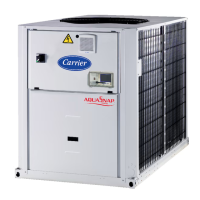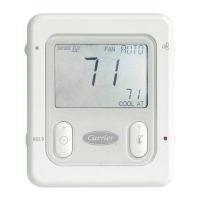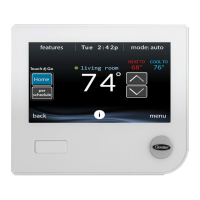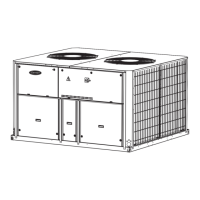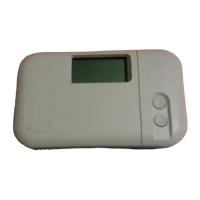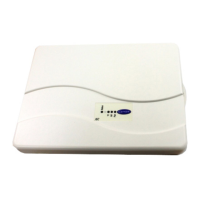3.7 - Pressure transducers
Three types of transducers (high pressure, low pressure, water
pressure) are used to measure various pressures in each circuit.
These transducers deliver 0 to 5 VDC. They are connected to the
SIOB board.
■ Discharge pressure transducers (high pressure type)
These transducers measure the discharge pressure in each
circuit. They are used to control condensing pressure or high
pressure load shedding. Discharge pressure sensors are
mounted on the discharge line piping of each circuit.
■ Suction pressure transducers (low pressure type)
These transducers measure the suction pressure in each circuit.
They are used to control EXV, evaporating pressure (in heating
mode) and monitor suction pressure safeties related to the
compressor operating envelope. Suction pressure sensors are
located on the common suction piping of each circuit.
■ Pump inlet/outlet water pressure transducers
(water pressure type, hydronic kit option)
These transducers measure the hydronic kit pump water inlet/
outlet water pressure and monitor the water ow. Pump inlet/
outlet water pressure sensors are mounted on the optional
hydronic kit.
■ Pump inlet/outlet pressure transducers (Free Cooling option)
These transducers measure the free cooling refrigerant pump
inlet and outlet pressure. They are used to control pump start-
up and monitor pump pressure during the free cooling cycle.
3.8 - Temperature sensors
Temperature sensors constantly measure the temperature of
various components of the unit, ensuring the correct operation of
the system.
■ Water heat exchanger entering and leaving water
temperature sensors
The water heat exchanger entering and leaving water temperature
sensors are used for capacity control and safety purposes.
■ Outdoor air temperature sensor
This sensor measuring the outdoor air temperature is used for
start-up, setpoint temperature reset and frost control.
■ Suction gas temperature sensors
These sensors measure the suction gas temperature. They
are used for the EXV control. Suction gas temperature sensors
are located at the suction side of each circuit.
■ Master/slave water sensor (optional)
This sensor measures the common water temperature in the
master/slave system capacity control. It is installed only in the
case of master/slave units.
■ Defrost temperature sensors (heat pumps)
These sensors are used to determine the end of the defrost
cycle for a given circuit.
■ Temperature setpoint reset sensor (EMM option)
This sensor measures the space (room) temperature for the
purpose of setpoint reset.
3.9 - Actuators
■ Electronic expansion valve
The electronic expansion valve (EXV) is used to adjust the
refrigerant ow to changes in the operating conditions of the
machine. The high degree of accuracy with which the piston
is positioned provides precise control of the refrigerant ow
and suction superheat.
■ Water ow switch
For units without internal pumps, the water flow switch
conguration allows for the automatic control of the minimum
water ow setpoint of the water ow switch. The conguration
depends on the unit size and is made automatically at the
start-up. If the ow switch fails, the alarm condition shuts off
the unit.
■ Water heat exchanger pumps (optional)
The controller can regulate one or two xed speed or variable
speed water heat exchanger pumps and takes care of
the automatic changeover between these pumps (see also
section 6.5).
■ Free cooling refrigerant pump
Free cooling refrigerant pumps ensure the correct operation
of the free cooling cycle.
■ Four-way valve (heat pumps)
The control actuates the four-way valve for cooling / heating
mode and defrosts session.
■ Free cooling three-way valve
The control actuates the three-way valve in order to isolate
compressors when the refrigerant pump is running (the
refrigerant is cooled by the air exchanger).
3 - HARDWARE
9
